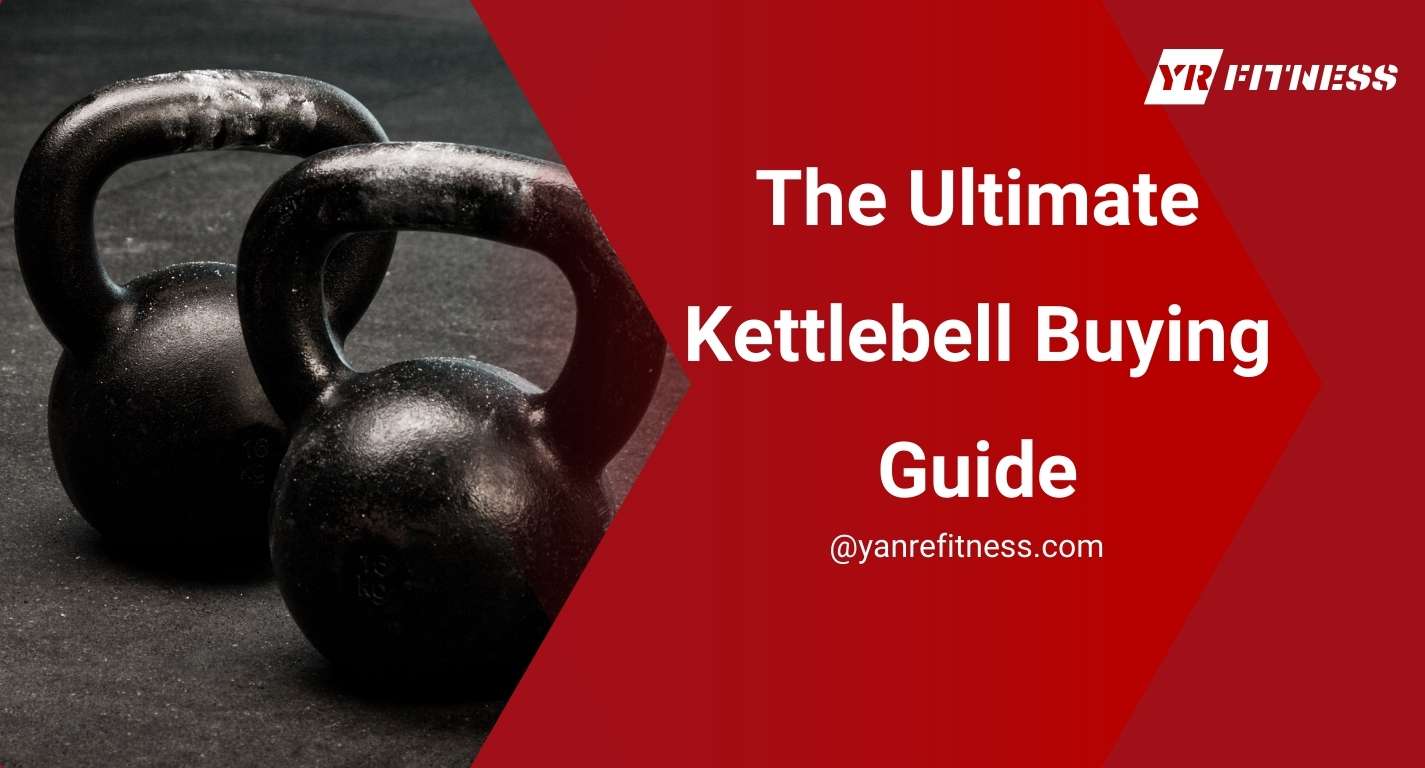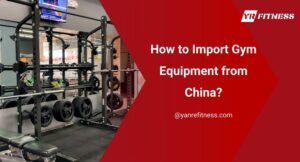Are you offering the best training experience for your gym members? Investing in the right kettlebells can significantly improve your gym’s value and performance.
As an expert gym owner, I understand how critical it is to provide quality equipment. That’s why it’s important to choose wisely when it comes to kettlebells.
Kettlebells have come a long way from being ignored in the corner of gyms. Today, they are a must-have for any serious fitness facility, especially those focusing on functional training.
In this guide, I’ll walk you through the types of kettlebells, the key features, and some tips to buy the best kettlebell for your gym.
Let’s dive in!
Table of Contents
1. Quick Comparison Chart
When selecting a kettlebell, there are several options to evaluate. Each type offers unique features that are important to consider before purchasing. Working with a reputable commercial gym equipment manufacturer can help ensure you choose kettlebells that deliver durability, performance, and value for your gym. To help you decide, the table below compares key features of the most popular kettlebell types:
Feature | Cast Iron Kettlebell | Competition Kettlebell | Adjustable Kettlebell |
Material | Solid Cast Iron | Steel Shell | Varies (Steel, Plastic, etc.) |
Weight Range | 8-48 kg (commonly) | Standardized Sizes (8-32 kg) | Adjustable (4-40 kg typically) |
Handle Size | Thicker, Varies by Weight | Uniform Handle Size | Varies by Brand |
Shape | Varies with Weight | Consistent Shape and Size | Adjustable with Varying Shape |
Best For | General Fitness, Strength | Competitive Lifting | Versatility, Space-Saving |
Price Range | $30-$200 | $50-$300 | $50-$150 |
Selecting the right kettlebell can make a big difference in the success of your gym’s training programs. YR Fitness manufactures a full range of commercial-grade kettlebells built for durability and performance. Contact us to discuss the perfect kettlebells for your facility and elevate your members’ training experience.
2. Kettlebell Industry Regions in China
China is a major supplier of kettlebells, known for offering both affordable and high-quality products. I must say that this country contributes a lot to the increasing market demand for kettleball that is expected to reach USD 11.2 Billion by 2031, as per Verified Market Research.
There are 3 main regions stand out in China for kettlebell manufacturing. Here are they:
- Jiangsu Province (Nantong City): Known for producing higher-quality kettlebells. Manufacturers here offer more reliable products, but the quality can still vary between factories.
- Shandong Province (Qingdao City): A key region for kettlebell production, often offering mid-range quality. The kettlebells from this area are typically a balance of affordability and reliability.
- Hebei Province: Produces budget kettlebells, generally of lower quality. These are often cast iron and attract buyers looking for cheaper options.
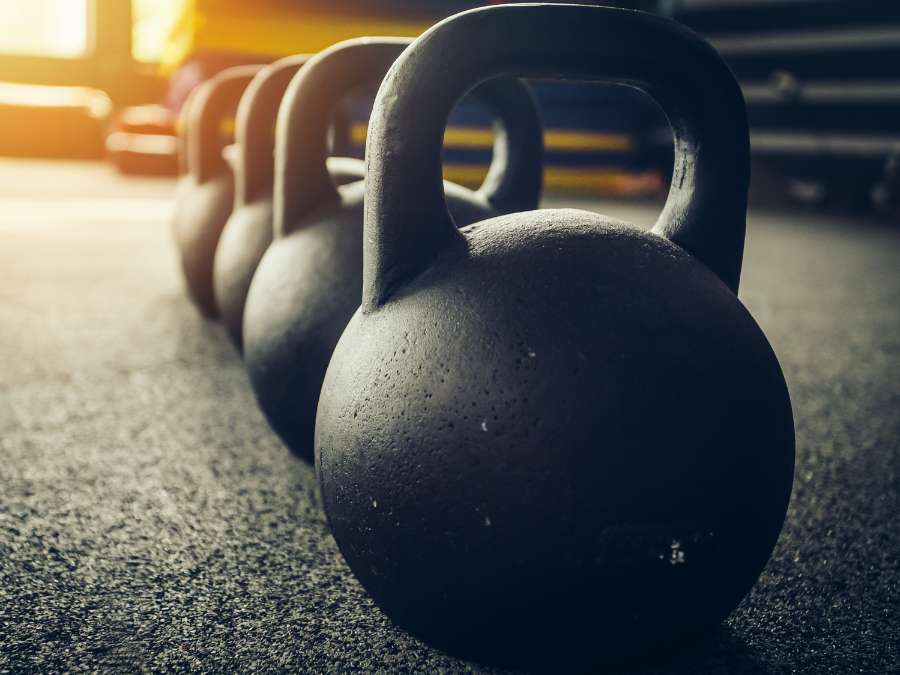
Knowing where your equipment comes from is crucial to ensuring quality and longevity. YR Fitness is committed to producing kettlebells that meet high manufacturing standards and reliable performance. Talk to us if you’d like guidance on sourcing kettlebells and avoiding common quality pitfalls.
3. Types of Kettlebell
Kettlebells come in various materials and finishes, each designed to suit different training needs and environments. Here are the main types of kettlebells categorized by material and coating, along with their pros and cons:
By Material
Cast Iron
Cast iron kettlebells are the original design and remain a popular choice due to their durability and balanced weight distribution. At YR Fitness, our kettlebells are made from solid cast iron, offering a strong handle that withstands heavy use while providing a comfortable grip. They come in a variety of sizes, with heavier kettlebells featuring larger handles for better control during workouts. Pros:
- Balanced weight distribution
- Wide handle for two-handed use
- Affordable compared to steel kettlebells
- Available in different shapes and sizes
Cons:
- Size increases with weight, making heavier kettlebells bulky
- May rust if not properly maintained
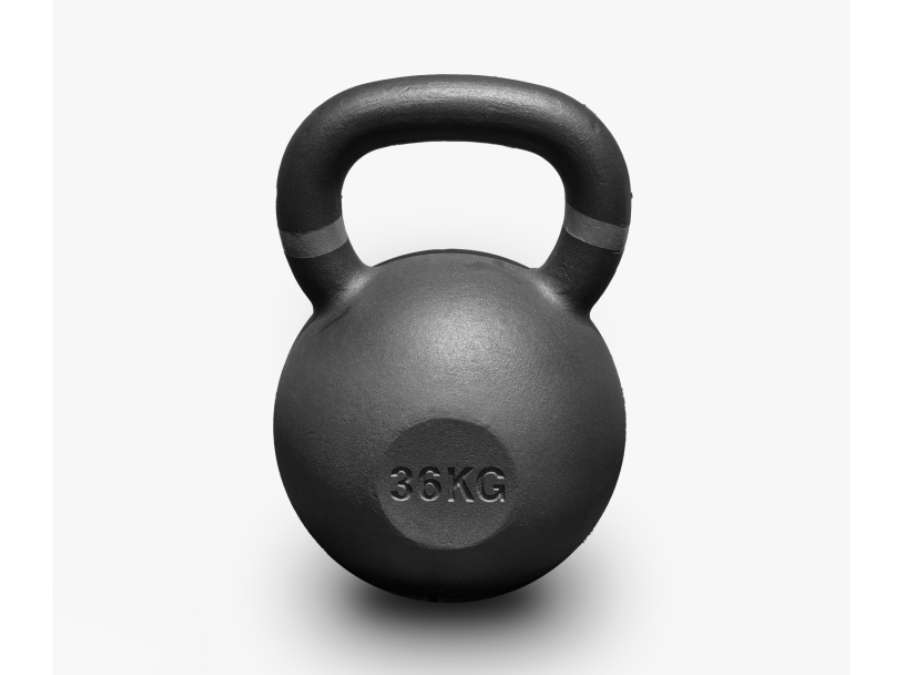
Steel
Steel kettlebells are primarily used in competitions due to their uniform size across different weights. This allows athletes to maintain a consistent grip and handling. Pros:
- Consistent size across all weights
- Durable construction
- Ideal for athletes requiring precision
Cons:
- More expensive
- Not ideal for 2-handed exercises
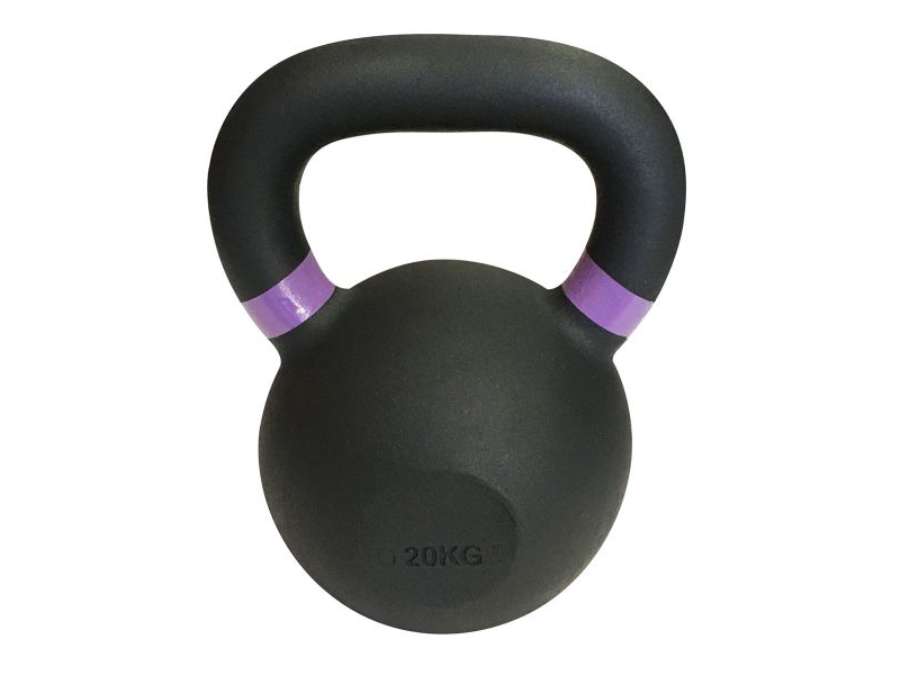
By Finish & Coating
The original RKC kettlebells didn’t have any protective coating. Today, kettlebells have different finishes. These coatings help protect the kettlebell and make the handle stick better to the bell.
Painted Kettlebell
Painted kettlebells are commonly used in industrial-style gyms and home workout spaces. They are less popular in commercial gyms due to the potential for paint chipping and wear.
Pros:
- Made from durable cast iron.
- The paint helps prevent rust and corrosion.
- Ideal for industrial-style gyms.
Cons:
- Paint can chip and peel with regular use.
- Less popular in commercial gyms due to wear and tear.
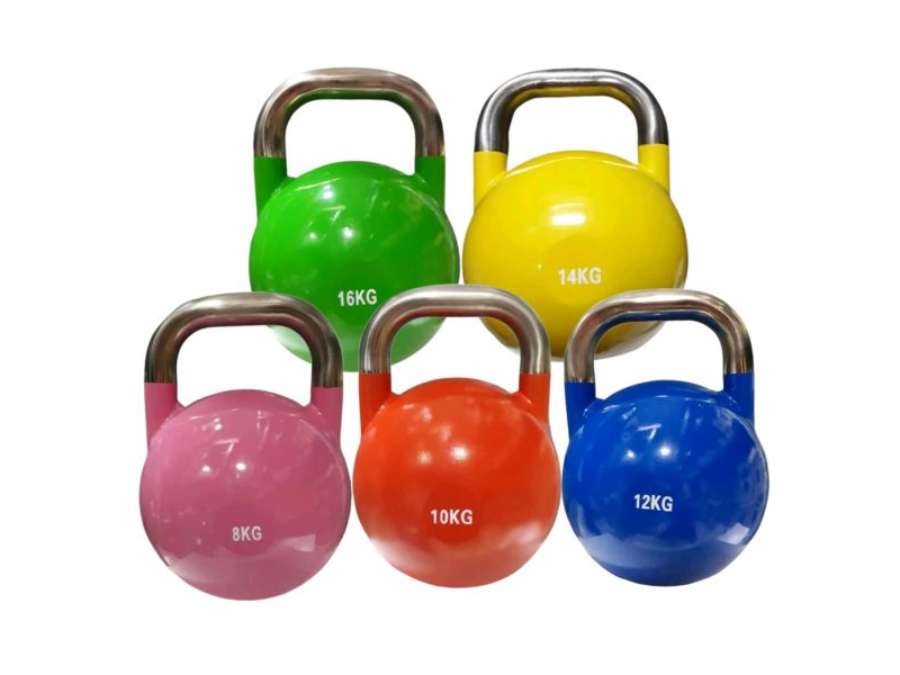
Vinyl Kettlebell
A vinyl kettlebell is a cast iron kettlebell coated with a colored vinyl layer for added protection. As a matter of fact, it’s often used in home gyms but is less favored in commercial settings due to durability concerns with the vinyl coating.
Pros:
- The multi-colored vinyl coating enhances the aesthetic appeal.
- Provides extra protection for both the metal core and the floor.
- Color coding makes it easy to differentiate between weights.
Cons:
- Vinyl coating breaks down quickly with use.
- Commonly found on lower-quality brands.
- Can grip the skin during certain movements, disrupting workout flow.
- The coating hides the quality of the core, potentially masking flaws or inconsistencies in weight.
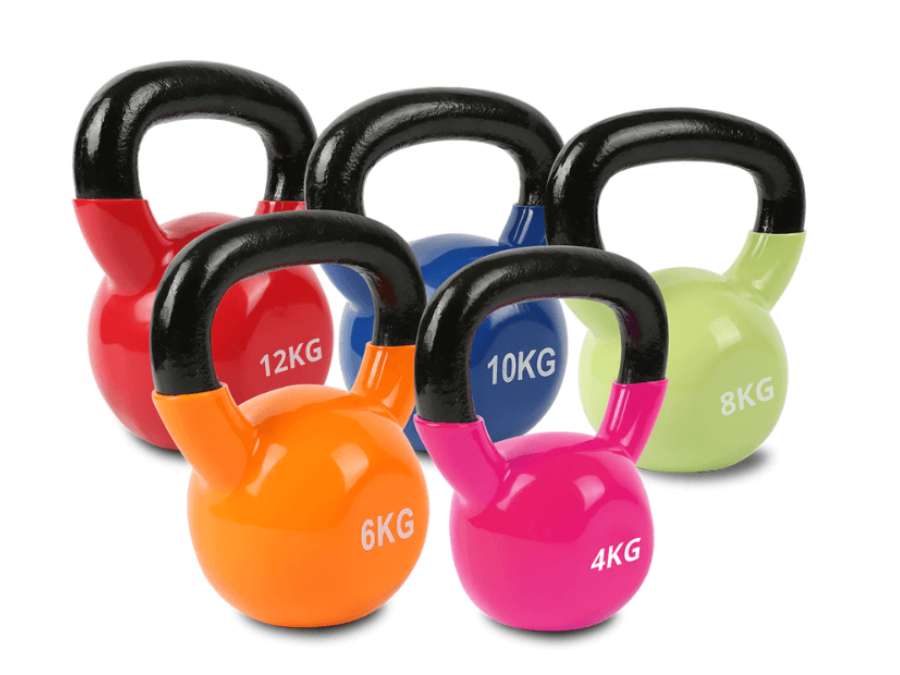
Rubber Kettlebell
The quality of a rubber kettlebell depends on its mix. Common ingredients include calcium carbonate powder and recycled rubber, but most manufacturers don’t reveal their exact formulas. A strong rubber smell often suggests lower-quality material. There are 3 types of rubber used in kettlebells:
- Recycled Rubber: Often made from tires or shoe soles, with tire rubber giving a better finish.
- Styrene-Butadiene Rubber: A common synthetic rubber.
- Pure Rubber: Rarely used, but some brands claim to offer it.
Pros:
- Low noise and gentler on floors compared to other types.
- Provides a comfortable and secure hold during workouts.
- Resistant to wear and abrasion, making it long-lasting.
- Offers better protection for both the floor and the kettlebell itself.
Cons:
- Can deteriorate over time, especially with sun exposure.
- Lower-quality rubber can have a strong odor, indicating poor material.
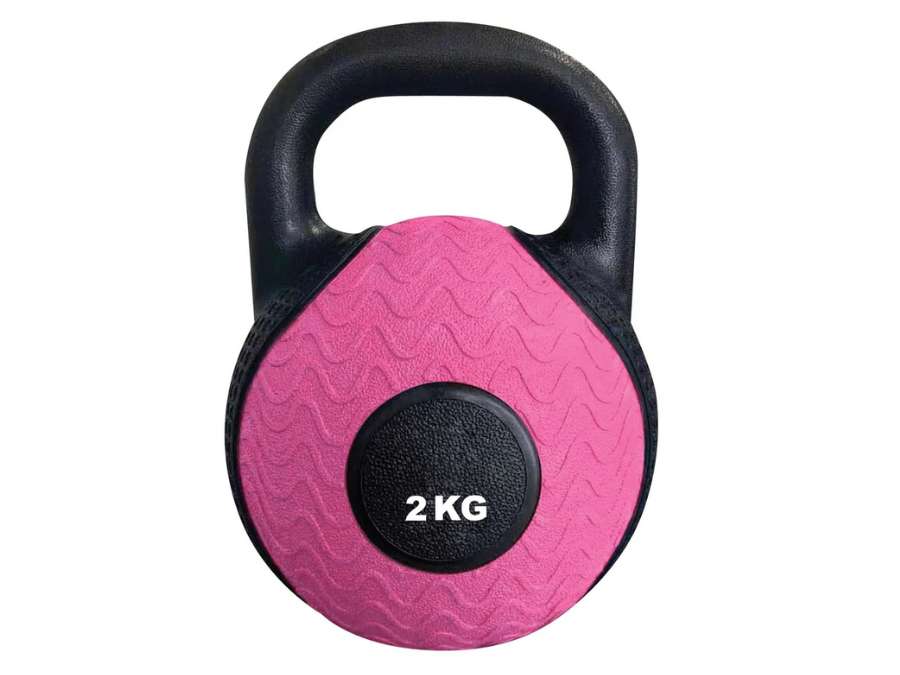
Chrome Kettlebell
Chrome kettlebells are made from electroplating with a light chrome coating. It’s best to use chrome kettlebells on gym floor mats to protect both the kettlebell and the floor.
Pros:
- The chrome coating is more durable than paint, resisting wear better.
- Shiny, sleek look adds a polished, high-end feel.
- Smooth handles provide a firm and comfortable hold.
Cons:
- Over time, chrome can accumulate scratches with heavy use.
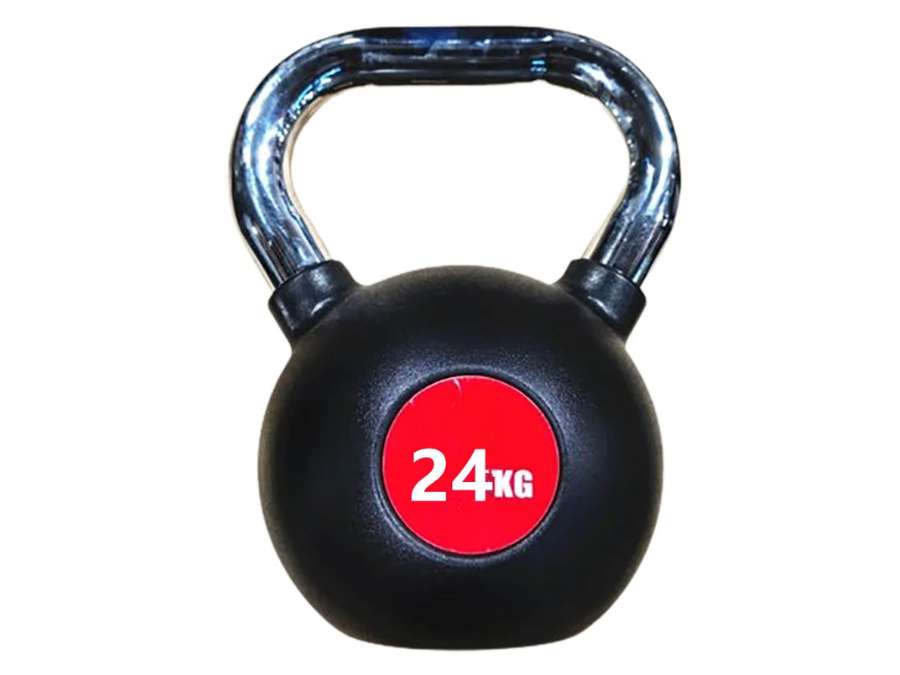
PU (Polyurethane) Kettlebell
PU, or polyurethane, is a versatile plastic commonly used to coat kettlebells. It’s considered the safest and most advanced material available, offering a long-lasting and odor-free alternative to rubber. There are 2 types of PU kettlebells, the TPU and CPU.
Pros of TPU:
- TPU kettlebells are more affordable compared to CPU.
- Created using an injection method under high temperatures, TPU offers good flexibility.
- It has no odor.
Cons of TPU:
- It has an average lifespan of around 4 years, making it less durable than CPU.
Pros of CPU:
- It has no smell, making it more pleasant for indoor use.
- Long-lasting, with CPU versions lasting up to 8 years.
- Safer and more advanced compared to other materials, offering better user protection.
Cons of CPU:
- Expensive
- A more durable type can not be recycled.
- TPU has a shorter lifespan compared to CPU, making it less cost-effective for long-term use.
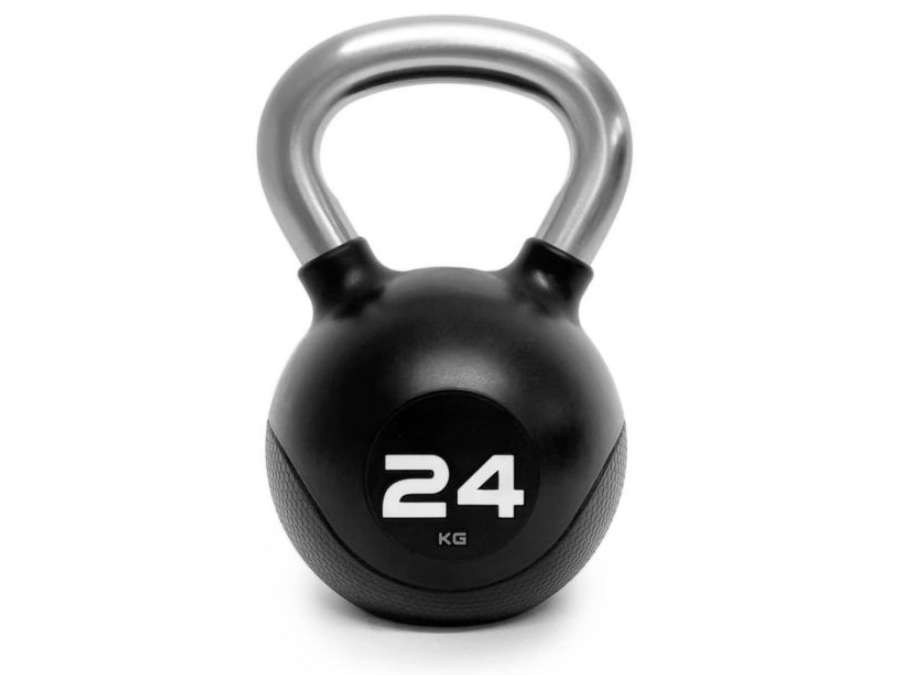
Choosing the right kettlebell material and coating impacts safety, performance, and longevity in your gym. YR Fitness crafts kettlebells using premium materials to ensure comfort, grip, and long-term durability. Speak to us to explore which kettlebell types best match your training programs and member needs.
4. Physical Structure of Kettlebells
Kettlebells have come a long way from their original design, transforming into a more user-friendly tool with a cannonball shape. Most kettlebells today consist of 3 key parts. Here are the essential components of a kettlebell:
Bell
The bell is the round, weight-bearing part of the kettlebell. It can either be solid or hollow, depending on the model. You won’t believe that hollow bells are preferred by advanced lifters because they maintain a consistent size and shape as the weight increases. The material of the bell also influences durability and feel during workouts.
Kettlebell Base
The base is the flat bottom part of the kettlebell that rests on the floor. A flat base is essential for exercises like renegade rows or handstands, as it offers stability. Higher-quality kettlebells have perfectly flat bases, while cheaper ones might wobble. Rubber-coated kettlebells often come with a rubber pad that reduces noise and floor damage.
Handle
Choosing the right kettlebell handle is essential for comfort, performance, and safety. Here’s a simplified guide to help you pick the best one:
Handle Construction
- One-Piece vs. Welded: Handles can either be molded as one piece with the kettlebell or welded separately. If welded, ensure the connection is smooth and secure to avoid it breaking during use.
- Check for Weakness: Look for any signs of cracks or weak spots where the handle joins the body.
Seam and Flashing
- Handle Seam: Some kettlebells have a sharp seam from the manufacturing process, which can scratch hands. Higher-quality kettlebells will have this seam smoothed out for a comfortable grip.
- Flashing: Be sure the flashing (seam across the handle) is smoothed out to prevent discomfort while gripping.
Diameter
- Size Matters: The handle diameter typically ranges from 30 mm to 38 mm, depending on the weight of the kettlebell. Thicker handles are more suitable for heavier weights, while competition kettlebells usually have a consistent 33 mm diameter.
- Comfort Test: When gripping the handle, if the fingers touch the palm, the handle is too thin. If they are too far from the palm, it is too thick. The ideal distance should be approximately 1 1/2 inches between the fingers and palm.
Handle Width
- Hand Placement: Some exercises require holding the kettlebell with both hands. It’s best to choose kettlebells with a ‘V’-shaped handle, as they offer more space for a comfortable grip.
- Handle to Bell Distance: For the kettlebell to rest comfortably on the wrist during exercises, the distance from the bottom of the handle to the bell should be approximately 2.5 inches. If it’s too short or too long, it can cause discomfort and negatively impact performance.
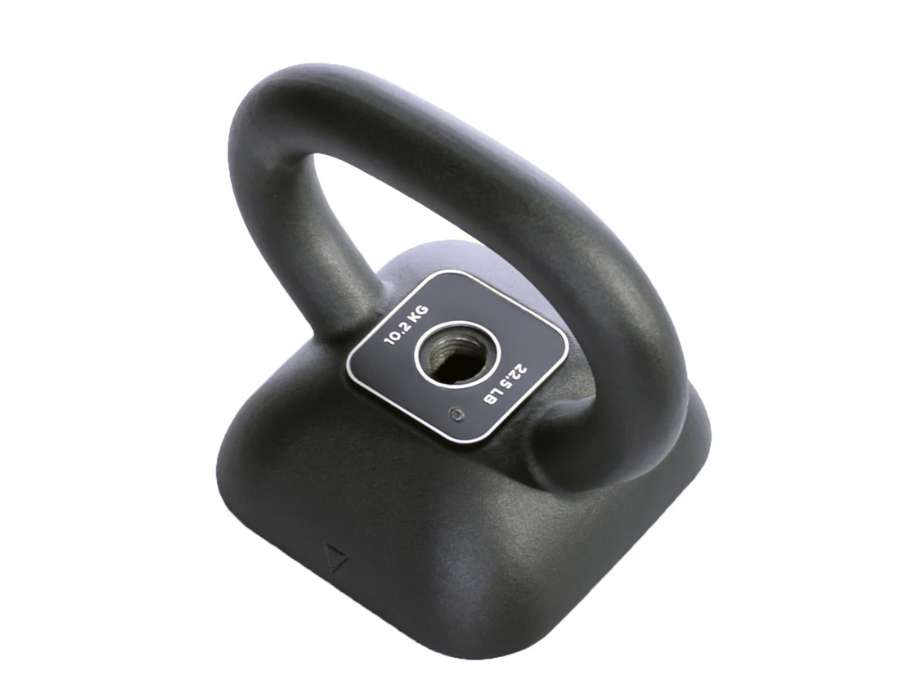
Understanding the physical structure of kettlebells helps you choose equipment that’s safe, reliable, and comfortable to use. YR Fitness designs kettlebells with thoughtful details like balanced bells, flat bases, and smooth handles for optimal performance. Click here to learn how our kettlebells can enhance your gym’s offerings.
5. Physical Properties of Kettlebells
The physical properties of kettlebells play a crucial role in their performance, durability, and safety during workouts. Here are some key elements to consider when evaluating the physical properties of kettlebells:
Construction
The construction of kettlebells is crucial in determining their durability and performance. A well-made kettlebell can handle intense exercises, while a poorly constructed one can fail under pressure. Here are the 2 key methods used to manufacture kettlebells:
- Single-Piece Casting: It is better because it creates a stronger, more durable kettlebell. Cheaper kettlebells with handles welded to the bell are weaker and should be avoided, especially for exercises that put pressure on the handle, such as push-ups or carries.
- 2-piece Assembly: Kettlebells where the handle and body are made separately and then welded together, which may result in weaker joints if not properly constructed.
Size and Shape
Competition kettlebells have a standardized size and are color-coded by weight. In contrast,standard kettlebells increase in both size and handle diameter as the weight increases. This can make heavier kettlebells harder to grip, which may be a challenge for users during exercises that require a firm hold.
Weight
Inaccurate weights are common with cheaper kettlebells, especially for heavier options. I believe it’s important that the stated weight matches the actual weight, as accuracy becomes more critical with larger kettlebells. To avoid this issue, buy from trusted manufacturers and keep the following guidelines below in mind:
- Typically, men start with 12-16 kg kettlebells
- The majority of women start using an 8-12 kg kettlebell.
Grip Feeling
The feel of a kettlebell in the hand is crucial. Since it will be swung during workouts, a strong grip is essential for safety, preventing the kettlebell from slipping and causing injury. The simplest way to check the grip is by holding it—if it feels comfortable to you, it will likely be comfortable for your members as well. For a secure grip, the kettlebell handle should have a slight roughness. Here are some key aspects to check:
- Inspect the handle seam, especially the flashing along the bottom center.
- Check the strength of the weld between the bell and the handle.
- Make sure the handle size fits an average person’s hand—avoid narrow handles on cheaper kettlebells.
- Test the grip for comfort, firmness, and smoothness.
- Steel kettlebells are more durable but cost more than cast iron ones.
- Compare the actual weight with the stated weight; if the difference is more than 3%, choose a different manufacturer.
- Pick up the kettlebell to check for even weight distribution.
High-quality kettlebells should feel right in your hand, stay balanced during use, and stand the test of time. YR Fitness ensures all our kettlebells are precisely manufactured to deliver consistent weight, comfortable grips, and rugged durability. Get in touch to find the best kettlebells for your gym and keep your members training safely and effectively.
3 Tips to Consider When Choosing the Best Kettlebell For Your Gym
When choosing the right kettlebell, several factors can impact workout experience and the lifespan of the equipment. Here are some key tips to help you select the best kettlebell for your gym needs:
#1 Flat Base
Look for kettlebells with a flat base for stability during exercises. For example, if your members do workouts where the kettlebell rests on the floor, a flat base will keep it steady and safe to use, preventing it from moving around during routine. At YR Fitness, our kettlebells are designed with a flat base for easy upright storage, saving space and ensuring convenience.
#2 Customer Reviews
Checking customer reviews is important to confirm the kettlebell’s quality. Wanna know why? Reviews give insights into other people’s experiences, helping you make a more informed decision. You can learn about things like durability, comfort, and accuracy before buying for your gym.
#3 Color Coding
Consider kettlebells with color-coded weights for easy identification. For example, if you have multiple kettlebells in your gym, color-coding can help quickly grab the right weight during your members workout. This feature is particularly useful in busy or shared gym spaces.
Choosing the right kettlebells protects your investment and gives members a better workout experience. YR Fitness offers expert support and top-grade kettlebells designed to perform under the demands of commercial fitness environments. Message us today to ensure your gym is equipped with kettlebells your members will love.
Conclusion
In conclusion, the best kettlebell choice for your gym will depend on the specific needs of your members and the types of workouts you offer. By considering the factors discussed in this guide, you can confidently select the kettlebells that best suit your gym’s requirements.
We hope this kettlebell buying guide provides you with valuable insights to make the right decision. If you are a gym owner looking for a high-quality kettlebell, consider YR Fitness. We are dedicated to providing durable kettlebells designed to meet professional standards. If you have any further questions, contact us today!
Dive Deeper Into Our Resources
Looking for more diverse product options? Browse through our handpicked selections:
For some insightful reads, we’ve curated a list of recommended articles just for you:
- Top 10 Gym Equipment Brands In China
- A Comprehensive Guide to the Muscles Activated by Russian Kettlebell Swings
Still haven’t found what you’re looking for? Don’t hesitate to contact us. We’re available around the clock to assist you.
Related articles:
